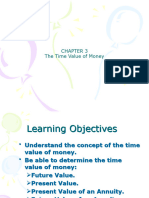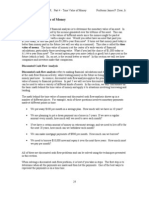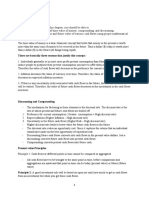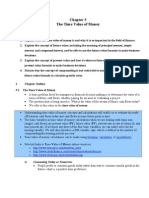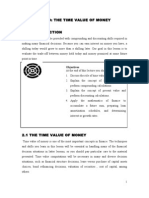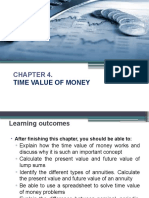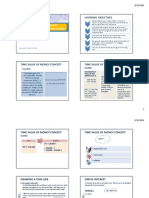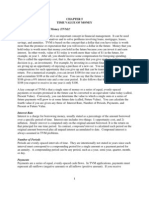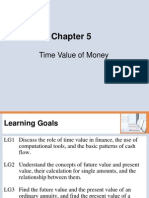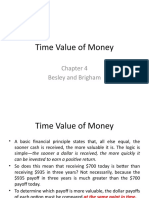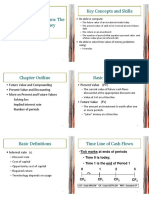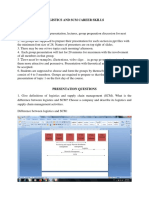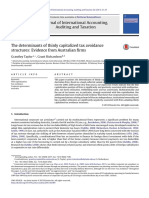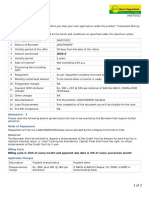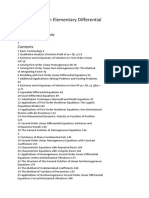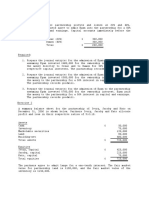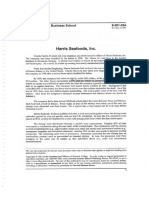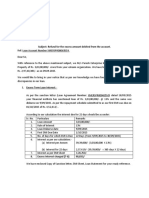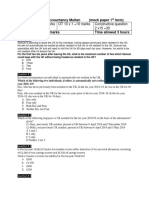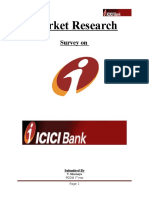0% found this document useful (0 votes)
43 views106 pagesTime Value of Money & Valuation
The document discusses time value of money concepts including calculating future and present values, compounding interest, and discounting cash flows. It provides examples of how to use the time value of money equation and formulas to determine the future and present value of lump sums, annuities, and other cash flows over multiple time periods given an interest rate. The learning objectives cover time value of money, bond valuation, stock valuation, and other financial decisions that involve spreading costs and benefits over time.
Uploaded by
Nguyễn Thúy KiềuCopyright
© © All Rights Reserved
We take content rights seriously. If you suspect this is your content, claim it here.
Available Formats
Download as PDF, TXT or read online on Scribd
0% found this document useful (0 votes)
43 views106 pagesTime Value of Money & Valuation
The document discusses time value of money concepts including calculating future and present values, compounding interest, and discounting cash flows. It provides examples of how to use the time value of money equation and formulas to determine the future and present value of lump sums, annuities, and other cash flows over multiple time periods given an interest rate. The learning objectives cover time value of money, bond valuation, stock valuation, and other financial decisions that involve spreading costs and benefits over time.
Uploaded by
Nguyễn Thúy KiềuCopyright
© © All Rights Reserved
We take content rights seriously. If you suspect this is your content, claim it here.
Available Formats
Download as PDF, TXT or read online on Scribd
/ 106



